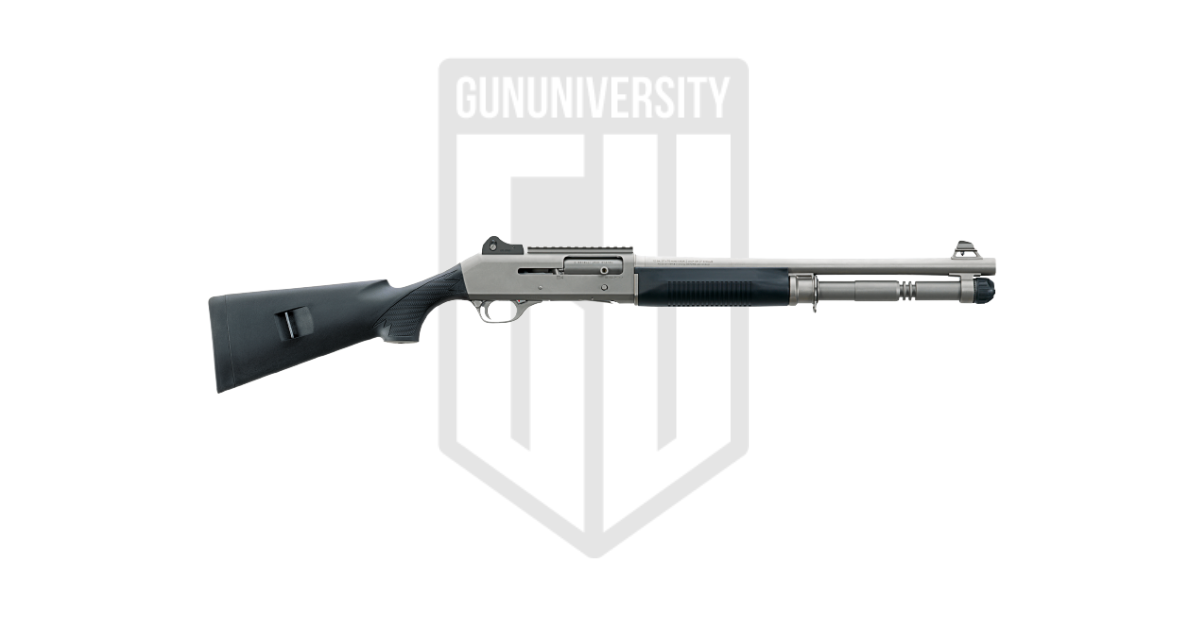Benelli M2 vs M4: Italian Inertia vs Gas Scatterguns
If you’ve heard of Benelli, you likely know them for their smooth-shooting scatterguns. You might even know them for their ridiculously expensive-but-awesome-to-shoot shotguns. What you might not know is that Benelli didn’t start out making firearms. They started their life in the world of two wheels, not two booms. They were motorcycle manufacturers, but somewhere along the way, they took a detour into the world of guns.
Man, did they ever figure it out.
The original Benelli M1 was a complete game-changer. Up until then, semi-auto shotguns were pretty much looked down on for defensive use. They were finicky and prone to stovepipes—and that’s not just the name of a character in a spy movie. The M1 changed all of that and was quickly adopted by police departments and military forces all over the world.
Benelli became the king of the semi-auto shotgun, and they’ve since churned out a dozen different models. From police- and military-grade fighting shotguns to fancy guns for busting clays on a bright sunny day, they make them all.
Two of their most popular guns, and likely their two most famous fighting shotguns, are the Benelli M2 and the Benelli M4. Today we’re going to put these two shotguns head-to-head to see which one earns the right to be in your safe.
Benelli M2 History
Building on the success of the M1, the Benelli M2 predictably became the next evolution in the family. While the original M1 used an HK-designed recoil system (which first showed up on the HK512), the M2 is an inertia-driven gun, available in a variety of configurations. The M1 was the gun that really put Benelli on the map for duty and home defense, making a serious case for the semi-auto shotgun in these roles.
Released in the 1980s, the M2 was an instant hit. It secured contracts with police and military forces globally, including the Italian Carabinieri, the Irish Army, and the UK Army.
The M2 shares a lot with its predecessor, but the few differences are critical. Benelli introduced a Crio-treated barrel, designed to make it tougher and tighten shot patterns. They also updated the chokes, making them longer and more effective. To cut down on felt recoil, the M2’s stock features a padded chevron system. The stock is also adjustable for length of pull (LOP) and includes a shim kit for fine-tuning drop and cast.
It’s fair to say the M2 has become Benelli’s flagship shotgun and a favorite among those who demand reliability and performance.
Benelli M2 Variants
The M2 comes in many variants in both 20 and 12 gauge, something the M4 does not. Below are the performance 3 gun and the tactical version of the M2.
Benelli M4 History
When Benelli developed the M4, they did something uncharacteristic. They leaned into a gas-operated system. If you know Benelli, you know they’re all about inertia-driven designs. However, when the United States Marine Corps came looking for a new shotgun, they presented Benelli with a specific set of requirements.
The Marines needed a shotgun that could handle heavy optics, including night vision. They also wanted an adjustable stock to accommodate body armor and a rail for mounting accessories. And, of course, it had to be a semi-auto.
Benelli rose to the occasion, developing the M4 and its unique Auto-Regulating Gas Operated (ARGO) system. This system was designed for maximum reliability, even under the harshest conditions. It’s so good that the M4 was adopted as the M1014 Joint Service Shotgun and became a favorite of the LAPD and numerous military forces around the world, from Italy to Israel and beyond.
The M4 is one of my favorite shotguns. Check out our full Benelli M4 review.
Benelli M4 Variants
The M4 is only offered in 12 gauge, in two different colors, and a few different stock configurations plus the M1014 for civilians.
Benelli M2 vs M4 Spec Comparison
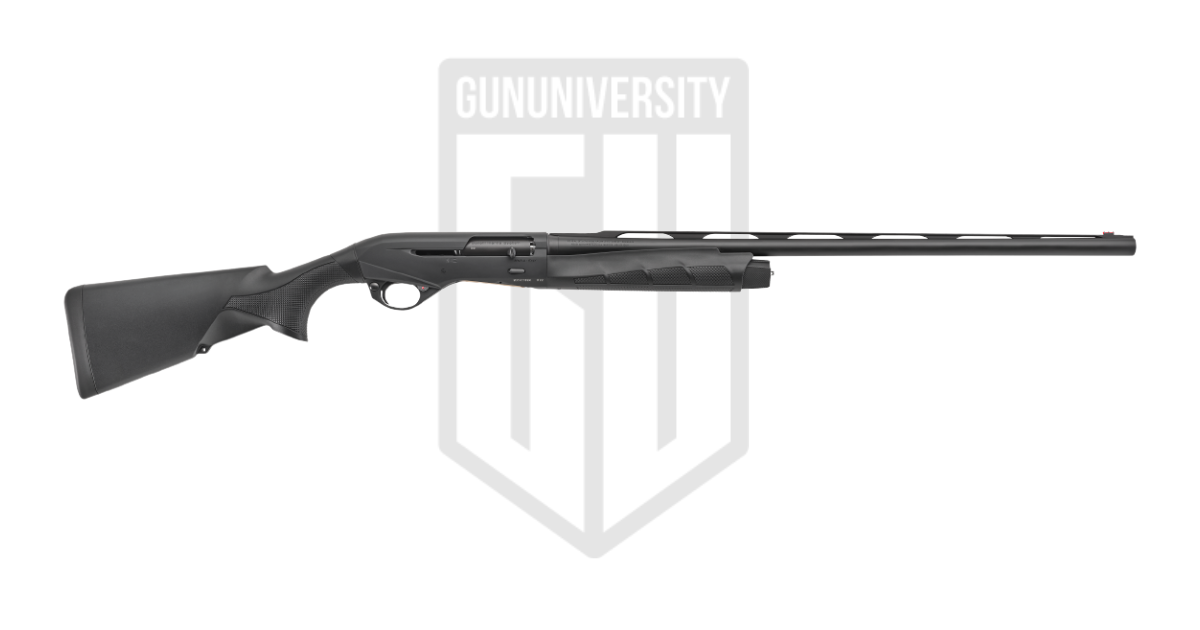
Benelli M2
- Final Grade : B+

Benelli M4
- Final Grade : B+
Gas vs. Inertia: A Tale of Two Systems
When you get down to the brass tacks of the Benelli M2 and M4, the heart of the debate is the fundamental difference between their operating systems: inertia versus gas. Both are incredibly reliable, but they each come with their own set of pros and cons. It’s not about which one is “better,” but which one is better for you.
The Inertia System
Benelli’s inertia system feels like a feat of modern engineering. When you fire an inertia-driven gun, the entire shotgun recoils rearward. But the bolt body? It stays put for a split second, thanks to its inertia. This creates a difference in motion, which compresses a massive spring between the bolt head and the bolt body. Once the shot leaves the barrel and the recoil subsides, that spring snaps back, flinging the bolt rearward to cycle the action.
The beauty of the inertia system is its elegant simplicity. Fewer parts mean fewer things to break and less to clean. It’s a system that thrives on being lean and mean, making these guns lighter and more agile. However, this same simplicity is also its weakness. Because the system relies on the gun’s weight to function, adding accessories like a side saddle or a heavy optic can throw off the balance and cause malfunctions. It also requires a firm brace against your shoulder to cycle properly, which can be an issue for certain tactical applications like breaching.
The Gas System
The gas-operated system, as seen in the Benelli M4, is a bit easier to wrap your head around—even for those of us with a crayon-eating brain. When a cartridge fires, some of the expanding gas is siphoned off. This gas pushes on a pair of pistons, which in turn push the bolt rearward to cycle the action.
The biggest advantage of a gas system is its softer recoil. That gas bleed-off soaks up a lot of the kick, making for a much gentler shooting experience. Unlike inertia guns, a gas system doesn’t care how much junk you pile on. You can add lights, lasers, and loaded side saddles, and it will still chug along reliably. This makes the M4 a fantastic host for accessories.
The downside? Gas systems are inherently dirtier. They require more frequent cleaning than their inertia-driven counterparts because all that gas and residue gets funneled back into the gun’s action. They also tend to be heavier and bulkier, which is a trade-off for their reliability with heavy loads and accessories.
Ultimately, your choice comes down to what you prioritize: the lightweight and low maintenance of the M2 or the softer recoil and accessory-friendly nature of the M4.
Variety of Guns
Depending on what you want to do with the gun will make a big difference in your decision. If you want a home defense gun, then the M4 and M2 both offer short, lightweight options with 18.5-inch barrels and numerous stock configurations. That’s great, but if you want a hunting or competition shotgun, then you have to turn to the M2 series.
The M2 comes in a field model, a slug gun, a turkey gun, a waterfowl gun, and a 3-Gun competition model. You can also get a 20-gauge model if you need something smaller and lighter.
Benelli’s M4 comes in two configurations. The M4 tactical and the M1014, a neutered version of the military’s gun. The M4 only comes in 12 gauge, and you can pick between a standard stock and a stock with a pistol grip, and that’s it.

Reliability
This is the golden question. Which semi-auto shotgun is more reliable? The M2 and its inertia system aren’t as maintenance heavy as the M4 and its gas system. However, the M4 gas system is unlike other gas systems and uses a self-cleaning dual piston that does function extremely well in the harshest conditions and after thousands and thousands of rounds.
The M2 is picky about how it’s shouldered, and any weight added, which does take the reliability score down a notch or two. The M4 and gas-operated shotguns, in general, tend to function better with lighter-loaded rounds to an extent. So much so that the M4 can handle 2.5-inch short shells. However, we are looking at two guns that are widely considered to be the pinnacle of semi-auto shotguns. If the M4 is a 10 out of 10, then the M2 is a 9.8.
Both guns are reliable and will serve you well. If you need a gun to go to Fallujah, take the M4. If not, maybe the lighter, handier M2 better suits your needs.
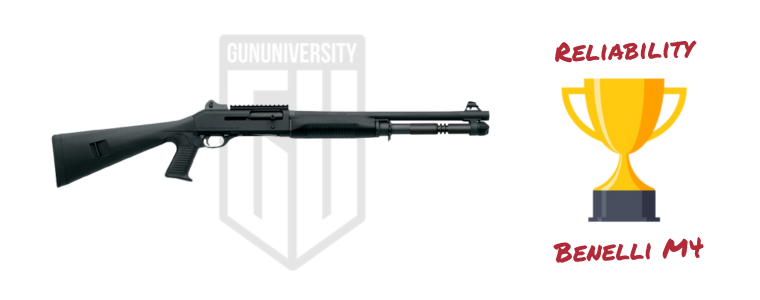
Recoil
Side by side, you will notice a difference between the M2 and M4 series shotguns. Gas operation takes a chunk of gas away from the gun to cycle the action. This helps reduce recoil and makes the gun easier to control. Additionally, the extra weight of the gas-operated gun helps reduce some recoil just by principle.
The inertia system of the M2 isn’t going to rock you, but the difference is noticeable. A pump shotgun has significantly more recoil than the M2, and as a semi-auto, it naturally takes a little sting out of a 12 gauge. Benelli’s Comfortech stock does remove some sting from the gun as well. If you want something lighter, recoiling the M2 does offer the 20 gauge option. A 20 gauge M2 is downright amusing to shoot and has significantly lower recoil than the 12 gauge.
The M4 still takes the cake when you compare 12 gauge guns, but the M2 in 20 gauge will offer the most reduced recoil for your buck.
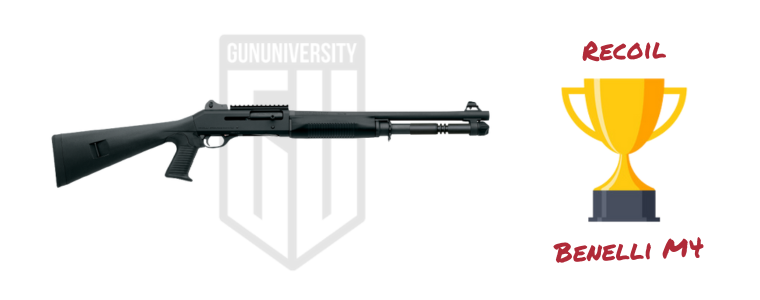
Ease of Use
Both guns have a fairly standard layout. You load your rounds into a tubular magazine, work the charging handle to load the gun, and pull the trigger. The safeties are similar and as are the standard ergonomics. There isn’t a huge difference in the general operation of the weapons.
The biggest difference comes down to cleaning these guns. Benelli’s M4 has a bit more to clean with gas ports, gas pistons, bolts, as well as the inside of the receiver. The M2 inertia system requires fewer parts overall, and cleaning and disassembling the gun is much easier.
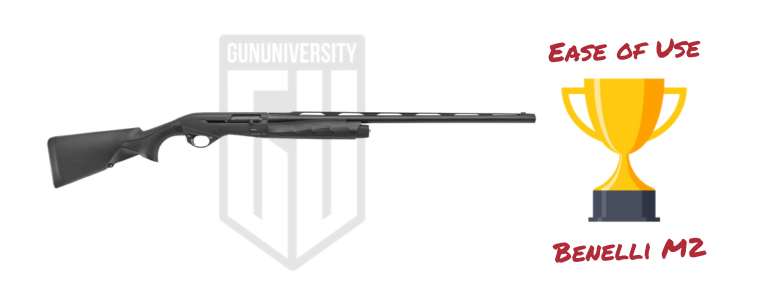
Accessorization
If you want to accessorize your shotgun, you might need to take a careful look at what you want to add to the gun. When it comes to adding accessories, the M2 can easily receive one of the modern micro red dots, a side-saddle, a light, and maybe a magazine extension tube. However, you might have to be cautious when you start adding all that weight. It takes quite a bit to make the gun malfunction, but you should ensure everything works as is before you depend on it for defensive use.
You could add a boat anchor to the M4, and it won’t care. The Marine Corps wanted a gas system that allowed them to use the massive thermal and night vision optics of the era. These easily added pounds to the gun, and on an inertia weapon, may have become an issue. Put a 10-50 scope on it. It doesn’t care.
On the flip side, the M2 has been around a lot longer, and there are likely a lot more M2s out there than M4s. With that in mind, the M2 aftermarket is much larger than the M4. There are more stocks, magazine extensions, charging handles, optics options, and more out there for the M2. The M4 lacks that same aftermarket. As an M4 owner, it can be frustrating to even find enough parts to become 922R compliant.
The M2 has tons of accessories available, including the XRail system, which introduced a 25-round rotating magazine for the gun.
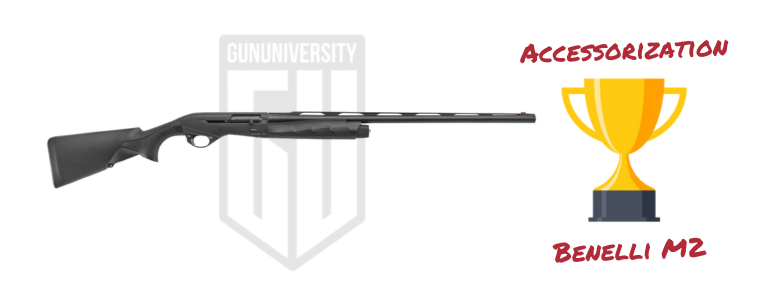
Price
When it comes time to shop for a semi-auto shotgun, you best expect to separate yourself from some serious dinero. Especially if you are going to start shopping for Italian shotguns, they aren’t cheap by any means. With that said, the M2 is much cheaper. The M2 Tactical starts with an MSRP of 1,249, and the Benelli M4 starts with an MSRP of 2,099. That’s a big price jump and one that might be tough for some to justify.

What About the M3?
We’ve talked about the M2 and M4, but is there an M3? Yes, the M3 is essentially an M2 with the added option to cycle the gun manually as a pump-action shotgun. It’s neat, but it would fall on the side of the M2 if we introduced it to this competition.
Spaghetti Blasters For All
Italians have taken shotgun gold. Beretta now owns Benelli, as well as Stoeger and Franchi. This gives them a massive amount of control over the tactical market. Their semi-autos dominate the conversation, and the M2 and M4 are a big part of that. Sure the 1301 might be the new hotness, but they proved the M2 and M4 in more ways than one. Being armed with either means you have a top-tier shotgun that’s dependable, capable, and quite powerful.
And The Winner of Benelli M2 vs M4
It really depends on your use case, but the Benelli M2 came out on top. If you are needing a dedicated tactical shotgun and have some money to spend, the M4 would be the winner. But as an all around shotgun, we are giving it to the Benelli M2. You can get it in tactical, competition, and field versions where the M4 only has tactical offerings.
While I tend to be more of an M4 fan, the M2 does offer some advantages, and you certainly wouldn’t be under-armed with an M2. Which would you choose? Let us know below!
Useful Links for Benelli M2 and M4
Recent Posts
November 1, 2025
November 1, 2025
October 31, 2025
October 29, 2025



